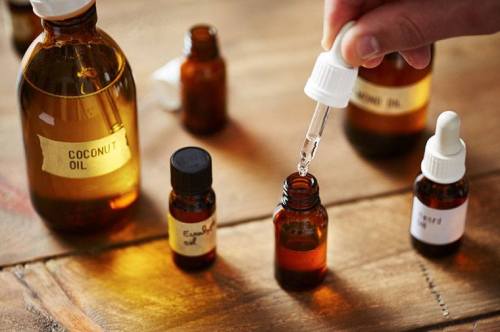Since founding Cannabis Feminist, I’ve heard from women (I’m talking hundreds of them) who want to explore the wellness advantages of cannabis but don’t want to “get high” or feel out of control in any way. When I tell them you can actually reap the plant’s rewards without experiencing its mind-altering side effects, most are surprised—that’s because they’ve never heard of cannabidiol (CBD).
CBD is the other major compound in marijuana, besides the psychoactive element (tetrahydrocannabinol—or THC). It offers a subtle sensation typically described as a mild body high without any impact on your mind. And despite keeping a low profile these days, CBD’s actually been used for centuries as a healing herb to treat everything from anxiety and pain to epilepsy—even Queen Victoria alleviated her menstrual cramps with CBD-rich cannabis in the 19th century. (She DIY’d her own suppositories, apparently.)
It wasn’t until users discovered cannabis’ more trippy side effects that cultivators started focusing on breeding strains with high levels of THC and low levels of CBD—leaving the health benefits of the latter to history books. Fortunately, thanks to new research, the compound’s making a comeback.
Here’s what you need to know about the non-psychoactive cannabis compound.

What’s CBD—and how’s it different than THC?
There’s so much more to cannabis than its psychoactivity—in fact, THC’s just one of over 60 cannabinoids that make up the plant. (The human body has an endocannabinoid system, located in the brain and nervous system, comprised of special receptors that allow us to process these phytochemical compounds—whoa!) As scientists explore more of these non-mind altering extracts, CBD’s quickly becoming a popular wellness ingredient thanks to its vast and varied healing potentials.
Studies have found cannabidiol to possess a multitude of medicinal properties: It combats inflammatory disorders, reduces nausea and vomiting, and possesses anti-tumor properties, to name just a few. And more are in the works. For example, a team of researchers at the California Pacific Medical Center hopes to begin trials on its potential as a breast cancer therapy soon, while a pharmaceutical version of CBD was recently developed by the UK-based drug company GW Pharmaceuticals (it’s funding clinical trials on the compound as a treatment for schizophrenia and certain types of epilepsy). Both of these studies are significant steps forward in the exploration of CBD’s health uses, as very few human studies have been conducted.

How to source your CBD
The confusing thing about CBD is that lawful sourcing depends on where you live. If CBD is sourced from the hemp plant, which is legal in all 50 states, you can purchase it anywhere. If, however, it’s cannabis-derived CBD, you can only access it from states that have legalized marijuana for either medical or recreational usage.
Either way, it’s critical to know your sources and choose CBD products from companies you can trust, since both hemp and cannabis are largely unregulated. I like CW Hemp products because I know they’re committed to extracting the cleanest hemp possible. A few of my other favorites are Mary’s Medicinals and Care By Design.
Because both hemp and cannabis are largely unregulated, it’s critical to know your sources and choose CBD products from companies you can trust.
The compound’s most often extracted as an oil that’s then used in vaporizers, as well as an ingredient in everything from teas to cocktails, smoothies, and chocolates. It’s also sold in spray form and as a powder which you can add to just about anything.
I’ve heard so many stories about how CBD has positively impacted people’s lives as a part of Cannabis Feminist. I want to help turn these anecdotes into statistics so that more people are open to exploring its benefits, which is why I’m conducting a survey to gather data about how people are using the plant today. After all, the future of cannabis is up to us.
After 10 years in the nascent natural beauty industry, Jessica Assaf went to Harvard Business School thinking she’d come out with a next-level beauty idea—instead she graduated with a plan for revolutionizing the cannabis product industry, with women at the helm. Now she’s one of thousands of other entrepreneurs who are cultivating the plant as a wellness ingredient, and founder of Cannabis Feminist, a go-to for (ridiculously fascinating) intel on the movement.
Marijuana going mainstream is one of our top wellness trends of 2017—here are 14 more. And 7 other reasons why the buzz around cannabis is so high right now.
Sign Up for Our Daily Newsletter
Get all the latest in wellness, trends, food, fitness, beauty, and more delivered right to your inbox.
Got it, you've been added to our email list.









